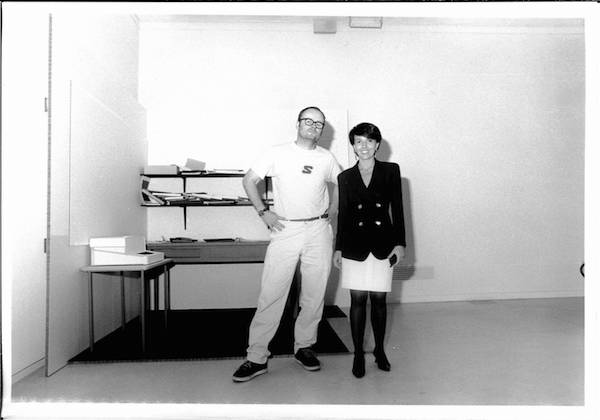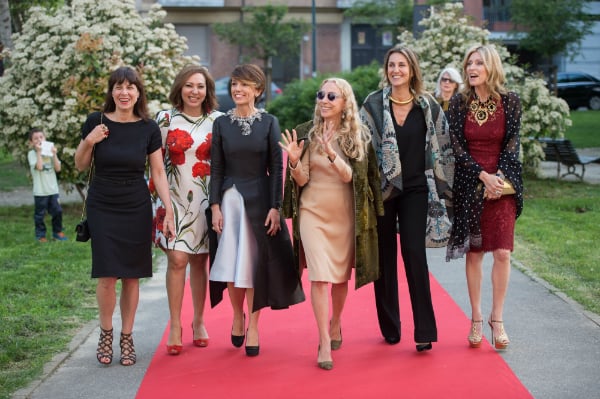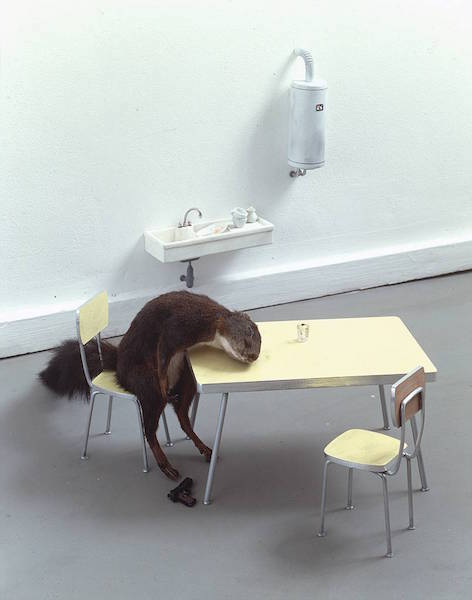People
artnet Asks: Super Collector and Art Patron Patrizia Sandretto Re Rebaudengo
From her admiration for Peggy Guggenheim to her belief in global patronage.

From her admiration for Peggy Guggenheim to her belief in global patronage.

Lorena Muñoz-Alonso


Patrizia Sandretto Re Rebaudengo
Photo: Courtesy Fondazione Sandretto Re Rebaudengo, Turin
Turin-born and based Patrizia Sandretto Re Rebaundengo has become a towering presence in the contemporary art world (see artnet News Top 200 Art Collectors Worldwide for 2015, Part Two and Who Are the Most Influential Women in the European Art World?).
Her ever-expanding art collection includes over 1,000 works made between 1970 and today, from Marisa Merz to Katja Novitskova. But she is also the force behind Turin’s Fondazione Sandretto Re Rebaudengo, established in 1995 and which has become a mainstay of the Italian art scene (see Fondazione Sandretto Re Rebaudengo Celebrates StellaRe Award and 20th Anniversary with Star-Studded Gala).
Last week, artnet News met with Patrizia—who was in London to attend an international summit of private museum owners organized by Philip Dodd as part of Art15 (see In Its Third Edition ART15 London Is Still Finding Its Feet)—to discuss her ideas about patronage and collecting, how much the art world has changed in the last two decades, and which young artists are rocking her boat these days.
Can you tell me about the Global Private Museum summit held at Art15?
I am firm believer in collaboration, and I have always thought private museums should work together. In fact, in 2008 the Fondazione Sandretto Re Rebaudengo launched FACE (Foundation of Arts for a Contemporary Europe) in collaboration with DESTE Foundation, Athens; Ellipse Foundation, Cascais; La Maison Rouge, Paris; and Magasin III, Stockholm.
Now we are aiming at launching a global network to foster collaboration, loan works from our collections, and share skills for curatorial and educational projects. Seeing how public museums are struggling in recent times with slashed budgets and the need to program blockbuster exhibitions, I think it’s key that private foundations and museums step up and collaborate to create opportunities and and support artists, regardless of ticket sales or the market.
Philip Dodd started the Global Private Museum summit in 2013, and each year we are welcoming more participants, like Don and Mera Rubell, Ramin Salsali, Budi Tek, Nicolai Frahm, and Wang Wei. The world is changing and we need to adapt.
You began collecting 20 years ago, and you have witnessed the boom of the contemporary art market, the so-called “curatorial turn.” In your view, how has the art world changed in the last two decades?
When I began collecting contemporary art in 1992, there weren’t that many of us. It was always a small group, always meeting each other at fairs and exhibitions in London, Cologne, New York, and Los Angeles, which were the key cities back then. I remember that the vernissages of the Venice Biennale were at small restaurants, where artists, collectors, and gallerists could have an intimate dinner. There were no galas, no fashion sponsorships, no parties, and no yachts. Also, the prices of artworks were much lower.
Now, the art world has expanded immensely, you have Hong Kong, Dubai, Qatar, Moscow, Brazil… Which is a good thing, particularly because artists now have much more opportunities. Also, contemporary art receives much more attention, respect, and support than ever before, which can only be a good thing.

Patrizia Sandretto Re Rebaudengo with artist Thomas Demand in 1996
Photo: Courtesy Fondazione Sandretto Re Rebaudengo
Do you think contemporary art was not so respected a few a years ago?
Peggy Guggenheim is an absolute icon and role model for me, and I remember reading that the Contessa Pignatelli once told her, during a visit to her palazzo in Venice, “you have one of then most amazing houses in Venice, shame about all these horrible artworks you have in it …” I experienced the same, people coming to my house, and saying behind my back: “But how can she live with these things!”
This doesn’t happen anymore. Contemporary art has become more widely understood and accepted. People have to understand that even Greek art and old masters were contemporary and shocking at some point.
How did you begin collecting?
I have always collected things since I was little. In the beginning it was pill boxes, then I fell in love with American costume jewelry, which is fake but wonderful, and which I still love and wear today. My mother, who collected ceramics and porcelain, used to take me to see classic art, which I never really enjoyed much. It didn’t speak to me. But then, in the early 1990s, a dear friend of mine who collected contemporary art in Turin asked me if I would be interested in seeing her collection and maybe buying some works, as she was moving to Guatemala.
And so I did, and it was a revelation. This same friend took me to London in 1992, where we visited Lisson Gallery and had studio visits with Anish Kapoor, Julian Opie, Tony Cragg… I bought my first works from galleries then and there. It was a great moment, as there was also a recession and gallerists and artists were very open and available. Meeting these artists was a transformative experience for me. That’s still what I enjoy the most about collecting art from artists from my generation: that you can enter into a conversation with them.

Patrizia Sandretto Re Rebaudengo with artists Doug Aitken, Maurizio Cattelan, Sam Taylor-Wood, Giuseppe Gabellone
Photo: Courtesy Fondazione Sandretto Re Rebaudengo
In the last years, however, you have been a staunch supporter of very young and emerging art.
Coming back to Peggy Guggenheim, there’s something she said that really stuck with me. When she was already quite old, someone asked her who were the most interesting artists making art at the time, and she said: “There’s no more interesting artists.” And despite annoying me terribly, I think I understand what she meant: you tend to share a cultural landscape, through books, music, films, with the artists from your own generation.
It is very easy to become “out of touch” as you get older, so about five or six years ago I made the decision of not making Guggenheim’s mistake, and to make an effort to keep learning and finding out about really young artists and emerging art. Which is why we began working with 89plus, and we do projects with very young artists, who might be the same age as my sons, but with whom I feel very comfortable and share a lot of ideas. Contemporary art allows you to keep feeling young.
Which young artists are you following and working with at the moment?
Ian Cheng, Avery Singer, Josh Kline, Katja Novitskova, Rachel Rose, Pamela Rosenkranz, Korakrit Arunanondchai, Magali Reus, Ed Atkins, Ryan Trecartin, Adrián Villar Rojas… We are living a great moment in contemporary art.
You have made a name for yourself as a strong woman in the competitive world of art, and a part of your collection is devoted to art made by women. Do you consider yourself a feminist?
No, I don’t consider myself a feminist, but work by women artists is essential for me and my collection. I identify a lot with them and how they see the world. Also, women have also played a key role in the development of museums: Gertrude Vanderbilt with the Whitney Museum; Abby Aldrich Rockefeller, Lillie P. Bliss, and Mary Quinn Sullivan with MoMA; Peggy Guggenheim… Art has been a realm for women to develop their creativity and ambition before they were allowed to enter the worlds of politics and business.

Paola Manfrin, Warly Tomei, Patrizia Sandretto Re Rebaudengo, Franca Sozzani, Francesca Tronchetti Provera, and Umberta Gnutti Beretta
Photo: Courtesy Fondazione Sandretto Re Rebaudengo
How and why did you make the switch from private collector to having a foundation?
It was a very natural, spontaneous evolution. I began collecting in 1992 and by 1995 I had already established the foundation. I realized that I could do more than just collecting. I was lucky enough to be able to buy art and I wanted to share it. A collection has to live, to travel, to be seen. My collection, moreover, is a non-for-profit endeavor, as I don’t sell the works I buy. So I thought that becoming a foundation was the best way to make my project serious, accessible, and transparent.
How do you approach a new purchase? Do you trust your gut or do you have advisers you consult?
I like listening to a variety of opinions. For the first 19 years, I had the luck of having Francesco Bonami as an advisor and director. There’s also a number of gallerists and museum directors that I’ve had long-held professional relationships with and with whom I’ve had endless conversations about art and artists. But at the end of the day, the decision is mine alone. I might make mistakes on occasions, but the decisions are always mine.
Can you remember any work or commission that made you particularly happy?
Maurizio Cattelan’s famous dead squirrel installation, Bidibidobidiboo (1996), which I bought in London from Laure Genillard gallery.

Maurizio Cattelan’s Bidibidobidiboo (1996)
Photo via: The Third Ray
Your son has followed your steps launching Artuner. Was he involved and interested in art since childhood?
I used to take him and my other son to art exhibitions, studio visits, and events since they were little. But Eugenio developed his own relationship to contemporary art while studying his MBA here in London and launched Artuner in 2013, which was the final project for his degree (see artnet Asks: Eugenio Re Rebaudengo). It’s great, because now we share a similar passion and feel very close.